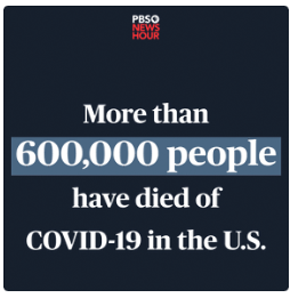Health Plan Weekly
-
News Briefs
✦ CMS on Oct. 15 approved a Medicaid section 1115 demonstration waiver that it said will allow working-age Georgia adults who are currently ineligible for Medicaid to get such coverage “by participating in qualifying activities like work and education, as well as meeting premium and income requirements.” The “Pathways to Coverage” program will apply to people ages 19 to 64 with income up to and including 100% of the federal poverty level, and will run from July 1, 2021 to Sept. 30, 2025. CMS said it expects that “over 30,000 individuals will receive Medicaid coverage during the first year of the demonstration” and nearly 65,000 Georgians will enroll in Medicaid or receive Medicaid premium assistance for coverage through employer-sponsored insurance during the five-year demonstration. Visit https://go.cms.gov/2IDn7AF.
✦ Health insurers across most markets saw their claims costs fall and their gross margins increase since the start of the COVID-19 pandemic and relative to 2019, according to a new analyst from the Kaiser Family Foundation. In addition, medical loss ratios in the Medicare Advantage market decreased 5 percentage points through the first six months of 2020 relative to the same period in 2019, and group market MLRs decreased by an average of 3 percentage points year over year. In the individual market, though, average MLRs held steady relative to 2019. “Although we cannot measure profits directly, all signs suggest that health insurers in most markets have become more profitable so far during the pandemic,” the report concluded. Read more at https://bit.ly/3lIc9Ie.

-
Individual Market’s Growing Pains Hit Unsubsidized Hardest
To the Trump administration, a recently released report on individual insurance market enrollment demonstrates that “people who do not qualify for subsidies continue to be priced out of the market.” Indeed, between plan years 2016 to 2019, unsubsidized enrollment both on and off the Affordable Care Act exchanges declined by 2.8 million people, representing a 45% drop nationally.
The reason behind those trends — as the administration suggested — is chiefly high costs, according to one policy expert. But the forces that drove individual market premium changes to spike so much are a bit more complicated, and they illustrate just how much change the market has undergone since the ACA’s inception.

-
UnitedHealth’s Results Indicate Care Deferral Trend Is Waning
UnitedHealth Group on Oct. 14 reported that its adjusted earnings per share (EPS) was $3.51 for the third quarter, beating the Wall Street consensus of $3.11. According to a company news release, UnitedHealth brought in $65.1 billion in the third quarter, representing an 8% increase year over year. However, the $3.51 adjusted EPS for the third quarter of this year is a 10% drop from last year’s third-quarter EPS.
Like other health insurers, UnitedHealth has benefited from reduced care utilization due to the COVID-19 pandemic: in the second quarter, the company posted a 70.2% medical loss ratio (MLR) (HPW 7/20/20, p. 3). In an Oct. 15 investor note, Citi analyst Ralph Giacobbe pointed out that the firm’s reported third-quarter MLR was 81.9%, lower than the Wall Street consensus projection of 83.6%.

-
Policymakers Aim to Blunt Pandemic Impact on People of Color
The COVID-19 pandemic has been especially harmful to people of color in the U.S., as they are more likely to suffer financial hardship, extreme cases of the disease or death than the white population. Experts say the devastation to communities of color is the product of systemic racism — particularly a lack of access to insurance coverage and quality care — and the pandemic’s economic consequences will make all of those problems worse.
According to a Sept. 15 report released by the Kaiser Family Foundation (KFF) and the Epic Health Research Network, people of color were more likely to test positive for COVID-19 and to require a higher level of care at the time of diagnosis compared to white patients, and they also were more likely to be hospitalized and die from the novel coronavirus than white patients were. The report found that:

-
Regardless of Outcome, Election’s End Should Help Insurers
In recent notes to investors, equities analysts have suggested that the best-case scenario for the managed care industry might be a Democrat in the White House and a split Congress — reasoning that partisan gridlock would cause the status quo to prevail. Still, they say, the outcome of the upcoming elections is less important than the anticipated benefits of simply moving past the uncertainty that they’ve generated.
The election and concerns about the Affordable Care Act’s future “kept a lid” on MCO stock prices most of this year, Jefferies analysts David Windley and David Styblo wrote in an Oct. 12 research note. “We think those are starting to come to an end and will improve sentiment and valuation. We believe MCOs rise regardless of election outcome.”












